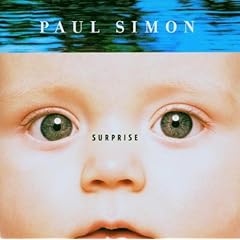Punk Rock Countdown: No. 22
"New Feeling," by Talking Heads
The second track of Talking Heads' first album, 77, exemplifies the band's quirky sound. Opening with a twangy, rockabillyish riff, followed by simple but odd guitar rhythms with single lead notes thrown in here and there, as if at random, "New Feeling" sets the stage for the trademark sound of Talking Heads: lead singer David Byrne's hesitant, shaky vocals. It's not...yesterday...anymore..., sings Byrne in that off-kilter, disconnected style.
As Talking-Heads.net explains it, some of the CBGB crowd, where Byrne and company got their start in the mid-1970s, worried that Talking Heads were too eager to "sell out." (They even appeared on American Bandstand, of all places, in '77.) But with "New Feeling," the band proved they would be just as weird on vinyl as they were at the club. Talking Heads "started to sound on record they way they did downtown":the staggered rhythms and sudden tempo changes, the odd guitar tunings and rhythmic, single-note patterns, the non-rhyming, non-linear, non-narrative lyrics full of aphoristic soundbites that came across like odd remarks overheard from a psychiatrist's couch, and that voice, singing above its normal range, leaping into falsetto and from there into strangled cries like a madman trying desperately to sound normal.
When I first heard this strange sound around 1979 or 1980, "New Feeling" symbolized the idea of "new wave." From that opening declaration -- It's not...yesterday...anymore -- I understood that music was changing. It was indeed a new feeling -- a new thing. It wasn't rock'n'roll as we'd come to know it. It was stretching the boundaries -- even stretching the boundaries of punk. But that was okay by me.
:: Andrew 10:12 + ::
...
bloggedy blog
bloggedy blog recommends
bloggedy pod (my podcast page)
Independent hotels
in Missouri
eMusic's Power Charts: The Most Interactive Music Charts Online.
In rotation
What I've been listening to lately. Click album cover or hyperlink to hear track samples and learn more.
 Rickie Lee Jones, Sermon on Exposition Boulevard
Rickie Lee Jones, Sermon on Exposition Boulevard
 Patty Griffin, Children Running Through
Patty Griffin, Children Running Through
 Of Montreal, Hissing Fauna, Are You the Destroyer?
Of Montreal, Hissing Fauna, Are You the Destroyer?
 Field Music, Tones of Town
Field Music, Tones of Town
 De Bossen, The Girl Collection
De Bossen, The Girl Collection
 Cold War Kids, Robbers & Cowards
Cold War Kids, Robbers & Cowards

Frida Hyvonen, Until Death Comes

Tratore Basics Vol. 2, Novo Rock Brazil
 Yusuf: An Other Cup
Yusuf: An Other Cup
 The Beatles: Love
The Beatles: Love

The French Kicks: Two Thousand

The Blow: Paper Television

Freedom Haters Unite! A Bloodshot Records Sampler

Swan Lake: Beast Moans

Prototypes: Prototypes

Scanners: Violence Is Golden

Voxtrot: Mothers, Sisters, Daughters & Wives

Voxtrot: Your Biggest Fan

Macon Greyson: Translate

The Evens: Get Evens

Veruca Salt: Veruca Salt IV
 Bob Dylan: Modern Times
Bob Dylan: Modern Times

Pink Tuscadero: Look Your Best

Leigh Nash: Blue on Blue

Yo La Tengo: I Am Not Afraid of You and I Will Beat Your Ass

The Hold Steady: Boys and Girls in America

Bobby Bare Jr.: The Longest Meow"

The Be Good Tanyas: Hello Love

The Lemonheads: The Lemonheads

Ben Kweller: Ben Kweller

The Pipettes: We Are the Pipettes
 Paul Simon: Surprise
Paul Simon: Surprise

Exene Cervenka and the Original Sinners: Sev7en
 Johnny Cash: American V: A Hundred Highways
Johnny Cash: American V: A Hundred Highways

The John Doe Thing: For the Best of Us

The Fondas: Runaway Bombshell

Buzzcocks: Flat Pack Philosophy

Asobi Seksu: Citrus

Tapes 'n Tapes: The Loon

Various Artists: 2006 Pitchfork Music Festival Sampler (24 free tracks)

The Futureheads: News and Tributes

The Bottle Rockets: Zoysia

Camera Obscura: Let's Get Out of This Country

Art Brut: Bang Bang Rock & Roll

Drive By Truckers: A Blessing and a Curse

The Raconteurs: Broken Boy Soldiers

Belle and Sebastian: The Life Pursuit

Cat Power: The Greatest
bloggedy tags
from our sponsors
for your viewing pleasure
24x7
rocketboom
the Richard Show



 Simon Dawes,
Simon Dawes,